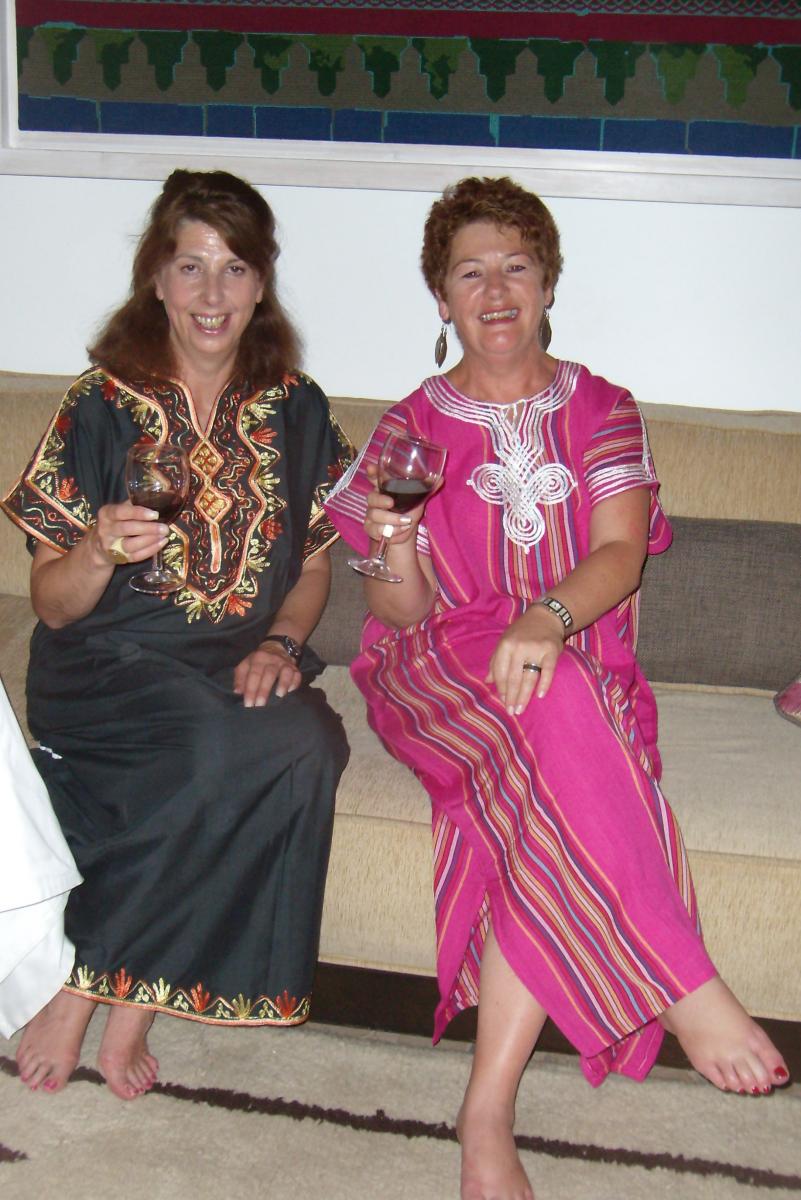Parallel Sessions 9.1 to 11.4
Heading for the open road: costs and benefits of transitions in scholarly communications (presentation available in PDF)
Michael Jubb. Research Information Network, United Kingdom
All the key players in scholarly communications – funders, universities, libraries, publishers, and researchers – have an interest in improving access to scholarly journals. But the different constituencies do not share a common view of how this might best be achieved. Much attention has focused on open access and the benefits it could bring if adopted globally. But little attention has been paid to the dynamics of transition towards substantial improvements in access.
This presentation reports on a major project to analyse possible transitions, for the UK and globally, over the next five years:
- the drivers and mechanisms underlying any transition;
- how change might be funded and sustained; and
- the associated costs and benefits.
The aim is to provide evidence to enhance understanding of how change might take place to improve access to journals in a variety of ways, and the costs, benefits, opportunities and risks that each entails. The study has established a baseline setting out the current state of access, costs and funding flows associated with scholarly journals; and a number of possible scenarios in which access is significantly enhanced through the use of
- open access repositories;
- open access publishing;
- large-scale extensions to licensing arrangements; or
- transactional solutions such as micropayments.
The work involves close cooperation between librarians, research funders, and publishers: each has provided information, and tested assumptions and analyses at key stages. No similar study has been undertaken anywhere in the world, The report will provide
- a narrative of the decisions and changes needed to reach each of the scenarios, and the drivers of change;
- quantification of the changes in access that would result, for people within and beyond the higher education community;
- estimates of transitional and continuing cash and non-cash costs, and the funding flows needed;
- quantification of the benefits from improved access; and
- estimates of cost-effectiveness and cost-benefit ratios.
The project is now in its final stages, and will be completed in the spring. Early results indicate major differences in the processes, risks, costs and benefits associated with transition toward each scenario, as well as with sustaining provision under each of them. The presentation will outline the key findings, and discuss the implications for researchers, funders, libraries and publishers.
Role of National and University Library of Slovenia in a multinational research project (IMPACT): a case study (presentation available in PDF)
Ines Jerele. National and University Library Slovenia, Slovenia
In this paper, the participation and the role of individual libraries as partners in a consortium research project on digitization issues are analyzed, following the example of the National and University Library of Slovenia (NUK) as a partner in the ongoing project IMPACT - Improving Access to Text. IMPACT is funded under the Seventh Framework Programme of the European Commission (FP7) aimed at improving automated text recognition of digitized materials from different European digital collections. For achieving the project’s objectives, a consortium of partners from different European libraries, information technology and software engineering centres and linguistic institutes was established. The consortium’s work is based on interdisciplinary collaboration in which libraries (like NUK) play an important role as demonstrators of tools developed within the project, and representatives of end-users needs and demands as well.
Different European digitization projects have included national libraries as project partners and the results of collaboration have been positive so far. A case study methodology is used for exploring some dimensions of such collaboration. First of all, the study shows that the consortium ensures libraries the economic and expert groundwork for an effective realization of the objectives outlined in the framework of the project. Secondly, the study shows positive results when comparing the experiences achieved within the project and the efforts invested in it by individual libraries. On the basis of such experiences, NUK will be able to expand its digitization plans. Other advantages include the overall project outcomes, like: formation of a common multinational digital collection, applicable OCR technology and metadata standardisation model used in the project. Comparative study with other NUK’s ongoing projects shows differences and similarities in the library’s collaboration and its work in applicative and research project schemes. Furthermore, the main results of the library as a demonstrator in the project are presented – they are in accordance with the library’s strategic goals and its official role in the information society.
Thus, this case study may be considered as an example of the best practice solution for participation of a national library in interdisciplinary research projects. National libraries can be important and active partners not only in an applicative, but also in a scientific research project of a consortium.
 |
Ines Jerele. In the year 2004 she received the Prešern award for work done on the Faculty of Arts in Ljubljana. First she was employed in National and University Library in Ljubljana, where she worked as research librarian in the Manuscript collection and Early Printed Collection. Afterwards she started working on different national and international projects. At the moment she is works for the Library Research Centre, she is an editor of the Slovene project group DEDI and works for international research project financed under European Commission (FP7). She continues her studies on the PhD level. In the year 2010 she prepared a significant exhibition entitled Flores in colores and together with co-authors published a scientific monograph, in which the cultural heritage of the 16th century culture in Lower Carniola is presented.
|
Staying relevant in the Google age: implementing vertical search at the University of Manchester; a technological and cultural perspective (presentation available in PDF)
Lorraine Beard; Andy Land. The University of Manchester, United Kingdom
The John Rylands University Library at the University of Manchester makes a clear commitment to improving resource discovery in its New Directions strategy. In addition an external review of the Library’s systems portfolio identified a clear need to improve the user experience in finding and accessing information. There are also drivers to ensure better utilisation of the Library’s investment in eresources, as well as the need for the Library to respond to the question of how do Libraries continue to stay relevant in the Google age. Taking all these factors into account the Library took a strategic decision in 2010 to implement a vertical search solution and established a formal project to do so in Summer 2010. The project has involved working in close partnership with a number of key stakeholders from the Library, IT Services, multiple vendors and the academic community and is a good example of the changing way in which Libraries need to plan and manage their projects in order to improve and deliver services which address the needs of their users. Effective governance, communication , change and project management have been key to the success of this project and highlights the growing importance of these skills in Libraries today.
The paper will consider the complex technological issues around integrating data from different sources and using different metadata standards. The project has involved for the first time vendors working co-operatively together to enable data to move between systems and different metadata formats, which also presents challenges. The cultural issues involved in implementing vertical search will also be discussed, including a shift in the Library’s internal philosophy towards search, the possible impact on the traditional Library catalogue and associated workflows and the changing user perception of the Library in response to vertical search.
The project is an excellent case study in new ways of working for Libraries, tackling complex technological issues and remaining focussed on improving user experience. The paper will be of interest to other Libraries considering or in the process of improving their Library’s resource discovery experience.
 |
Lorraine Beard is Head of Information Systems at the John Rylands University Library at the University of Manchester. She is responsible for leading a team which manages and develops the Library’s eLibrary infrastructure, digitisation, the Library Management System, the Institutional Repository and IT Support teams. The John Rylands University Library is one of the largest academic libraries in the UK and has an extensive collection of electronic resources and world renowned special collections. Lorraine is a member of both the Library Leadership Team and the IT Leadership Team for the University of Manchester and in these roles has been involved in the development of the Library and IT Strategies for the University. Recently Lorraine has been closely involved in improving the user experience at Manchester by implementing vertical search and delivering more Library services through the University’s portal. She has also led the development of the Library’s digitisation strategy and led the team which has developed the University’s institutional repository Manchester eScholar, which is now one of the largest in the UK.
Lorraine has had various roles in academic libraries over the last 18 years, including Faculty Librarian and Electronic Resources Librarian. Before pursuing a career in libraries Lorraine worked for several years in biological sciences research, after finishing her degree in biology at the University of Manchester.
|
Consortium innovations: making an impact in the academic community (presentation available in PDF)
Hazel Woodward (1); Lorraine Estelle (2). Cranfield University, United Kingdom (1); JISC Collections, United Kingdom (2)
This presentation will cover the work of JISC Collections in the UK. The national consortium is involved with a wide range of innovative activities which support education and research across all higher and further education institutions in the UK. JISC Collections manages the negotiations for, and the licensing of, over 100 e-resources which include: e-journal big deals; e-books; e-databases; still and moving image collections; and geo-spatial resources. It is calculated that the e-journal deals alone saved the community £2.5 million in 2010.
Cost savings are a high priority, but so too is the negotiation of the licences which ensure that the content can be embedded in research workflows and fully utilised in teaching and learning. JISC Collections ensures that licence terms are as advantageous as possible and permit usgae over and above 'fair dealing', and provide archival rights so that electronic content licensed today, is available for the scholars of the future.
Case studies have demonstrated that digital archives of historic materials are not only of immense value to research, but to teaching too. JISC Collections is developing the Historic Books platform to provide seamless access to thousands of digitised books from the 15th to 19th centuries.
There is also high demand from librries and their users for e-textbooks - an extermely difficult area for consortium negotiation. JISC Collections funded the National E-Book Observatory (which was the largest survey of e-book use and usage ever conducted worldwide). The project provided a range of e-textbooks to all UK higher education institutions and monitored their use by utilising 'deep log' analysis. The project also modelled how the online provision of e-textbooks impacted upon the sales of printed textbooks, which is the major concern of publishers. This was followed up with a project providing over 3000 e-books to all UK FE colleges. The consortium also wished to address the concern of many librarians which relate to e-book business models. A number of 'real time' business models have been trialled between publishers and libaries. It is probably fair to say that the "jury is still out" with regard to the perfect business model.
Finallly, the presentation will take a look at the digital image collection, Media Hub, which will support many areas of teaching by providing thousands of images and hundreds fo hours of film.
 |
Dr Hazel Woodward has been University Librarian & Director of the University Press at Cranfield University, UK, for over 12 years. Prior to that she was Head of Electronic Information at Loughborough University. Hazel’s research interests are in the areas of scholarly communication and digital information and she has published widely in the professional literature and spoken at many national and international conferences. Hazel is very active professionally. She is currently Chair of the JISC Collections Electronic Information Resources Working Group (which oversees all the national e-resource negotiations), Chair of the Board of COUNTER, a member of the UKSG Committee (and former Chair) and a member of the ICOLC (International Coalition of Library Consortia) Organising Committee. In 2009 Hazel was awarded the honour of Master of the British Empire (MBE) for “services to higher education”.
|
An integral approach to digital information delivery in The Netherlands (presentation available in PDF)
Victor-Jan Vos. Koninklijke Bibliotheek, National Library of The Netherlands, The Netherlands
The Koninklijke Bibliotheek (KB)’s mission is to connect people and information. One of its core responsibilities is to deliver digital scientific information to end-users, focusing on on-line access and services.
A significant number of documents, however, is only available to specific user groups (e.g. library members, students or researchers), or only remotely accessible by paying a fee.
This paper will discuss an approach to delivering information that focuses on creating on-line access to relevant scientific information to remote end-users. This integral vision is currently realized in two pilot projects, in cooperation with Dutch public libraries, research institutes and publishers.
In the first pilot project public library users from the province of Zeeland can make on-line use of the KB’s licensed content and databases. This service is offered as an integral part of a membership of a local public library, not as a membership of the KB. At its core is a federated identity management system allowing users authenticating with their own (local) accounts. In 2011 the KB will extend this service by offering it to other research and educational institutes in The Netherlands. In applying federated identity management, digital scientific information is centrally distributed and stored by the KB, and locally made available by its partners.
In the second pilot project, scientific articles, published by Elsevier are made accessible on a pay-per-download basis. In order to achieve this goal, the KB develops a web-based application that handles many license conditions and assists the user in obtaining the requested document. This application will request a digital identification and handles payment of the required fee. This web-based application allows the KB and Elsevier to make high-valued scientific data available to broad audiences.
The structure of this paper is as follows. First of all, I will discuss the KB’s vision towards infor-mation delivery as a part of the KB’s strategic plan. Secondly, I will introduce both pilot projects by explaining their purposes and how they fit into the described vision. Finally, I will discuss results of both pilot projects and their future prospects. I will conclude by asserting that the KB’s approach to information delivery creates a new role for the KB in disseminating scientific com-munications and thus innovates the KB’s role in research, education and society.
 |
Victor-Jan Vos is coordinator of online services development at the department of Marketing and Services of the Koninklijke Bibliotheek, National Library of The Netherlands (KB). He studied Media Studies at the University of Amsterdam and was previously a project manager and an information analyst in the Research and Development department of the KB.
|
Costs and benefits of a shared digital long-term preservation system (presentation available in PDF)
Esa-Pekka Keskitalo. National Library of Finland, Finland
This paper is a report on the cost-benefit analysis of digital long-term preservation that was conducted as a part of the National Digital Library Project in 2010.
The analysis was based on the assumption that a large number, perhaps as many as 200, of archives, libraries, and museums will share a preservation system. The term ”system” shall be understood as encompassing not only information technology, but also people, organizational structures, policies and funding mechanisms.
The cost analysis shows that a preservation system will incur, over 12 first years, cumulative costs of 42 million euros. If a dark archive will be built, the costs will increase by 3.4 million euros. Human resources and investments on information technology are the major cost factors. After the initial stages, the analysis predicts annual costs of circa 4 million euros.
The analysis compared the scenarios with and without a shared long-term preservation system. The results point to remarkable benefits of a shared system. In the developing and implementation stages, a shared system shows an advantage of 30 million euros, although the competing scenario consisted of only 5 unconnected solutions. During the production, the advantage is estimated at 10 million euros per annum.
The cost-benefit analysis was carried out by CSC — IT Center for Science Ltd. It is a state-owned company that provides IT support and resources for universities, research institutes and companies. The analysis was supported by a number of surveys and sub-projects carried out by the National Digital Library Project. The writer of this paper was closely involved in the process as the representative of the National Library of Finland in the Long-Term Preservation Section of the project organization, and acting as a liaison of the library sector in preparing the cost-benefit analysis and supporting surveys.
 |
Chief Analyst Esa-Pekka Keskitalo works at the National Library of Finland. He is the head of the unit responsible for digital preservation. The unit also takes care of web harvesting and collecting electronic legal deposits. He is further involved in projects promoting Open Access and institutional repositories in Finland.
Mr Keskitalo has been with the National Library since 2002. Before that he worked at the Undergraduate Library of the University of Helsinki, especially with developing students’ digital library services. He has served in the Board of the National Library, and in the Board of the Finnish Research Library Association.
|
Usage and impact of controlled vocabularies in a subject repository for indexing and retrieval (presentation available in PDF)
Timo Borst. German National Library for Economics, Germany
Since 2009, the German National Library for Economics (ZBW) supports both indexing and retrieval of Open Access scientific publications like working paper, postprint articles and conference papers by means of a terminology webservice. This webservice is based on concepts organized as a "Standard Thesaurus for Economics" (STW), which is modelled and regularly published as Linked Open Data (Neubert 2009). Moreover, it is integrated into the institution’s subject repository "EconStor" (Borst/Weiland, 2009) for automatically suggesting appropriate keywords while indexing and retrieving documents, and for automatically expanding search queries on demand to gain better search results. While this approach looks promising to augment "off the shelf" repository software systems in a lightweight manner with a disciplinary profile, there is still significant uncertainty about the effective usage and impact of controlled terms in the realm of these systems. To cope with this, we analysed the repository’s logfiles to get evidence of user’s search behaviour which is potentially influenced by auto suggestion and expansion of scientific terms derived from a discipline’s literature.
We carry out a couple of examinations: First, we calculate the rate of controlled search queries in relation to the total amount of search queries to get an idea of how often controlled search is actually being performed. Second, we examine the occurrence of controlled STW terms in non-controlled search queries with standard linguistic means to get an idea of the potential coverage. Third, we examine how often a suggested term expansion has been performed after a search query. Fourth, we calculate the amount of document queries (jump off pages representing a single publication with its metadata) referred from controlled search queries. Finally and additionally to these statistical operations, we identify both typical and idiosyncratic search patterns in order to get a better understanding of search behaviour.
After a brief outline of the technical infrastructure supporting vocabulary control in repository systems, the paper will explain and visualize the results of the logfile analyses. As conclusion, we suggest adaptations of the search interface to support a search and discovery experience which is substantially relying on librarian’s work.
 |
Dr Timo Borst is Head of IT Development at the German National Library for Economics with locations in Kiel and Hamburg. Being graduated both in computer science and in political science, he is interested in the social aspects of software and specifically the use of ICT in science and research. For several years, he has been involved in the development of repositories for learning material and research output. Currently he is concerned with projects for creating a research infrastructure which builds upon semantically enhanced data and services. He is one of the organizers of the annual SWIB conference (“Semantic Web for libraries”), which takes place in Cologne.
|
Cataloguing in the clouds: towards a UK shared cataloguing service (presentation available in PDF)
David Prosser. RLUK, United Kingdom
In the current economic crisis, it is clear that increased collaboration will help universities manage and reduce their costs. Coupled with this driver are the technological changes of (a) cloud computing and (b) technical developments in vendor systems. RLUK has established a Working Group, reporting in the summer of 2011, to establish what position UK research libraries should take in relation to these issues.
The Working Group has been tasked to look at the following;
+ the potential for a national bibliographic resource based on COPAC
+ cost savings available to libraries through deep sharing of back-room processes
+the needs of students and researchers for resource discovery and retrieval
+ the impact of new tools in library management systems to change current practices
+ the reliability and sustainability of cloud computing approaches
This paper will report on the work of the Group and present the conclusions of the study and outline the way forward identified for UK research libaries.
 |
In March 2010 David Prosser became the Executive Director of RLUK, the representative body for the UK’s leading research libraries. Before moving to RLUK, he was, from 2002, the founding Director of SPARC Europe, an alliance of over 110 research-led university libraries from 14 European countries advocating new models of scholarly communication. Previously, he spent ten years in science, technical, and medical journal publishing for both Oxford University Press and Elsevier Science. During this time he was involved in all aspects of publishing from production through to editorial and financial management of journals. Before becoming a publisher he received a PhD and BSc in Physics from Leeds University, UK.
|
Does library use affect student attainment? A preliminary report on the library impact data project (presentation available in PDF)
Graham Stone; David Pattern. University of Huddersfield, United Kingdom
The current economic climate is placing pressure on UK Universities to maximise use of their resources and ensure value for money. In parallel, there is a continuing focus on the student experience and a desire that all students should achieve their full potential whilst studying at University.
Internal investigation at the University of Huddersfield suggests a strong correlation between library usage and degree results, and also significant under usage of expensive library resources at both School and course level. Data from over 700 courses using three indicators of library usage, access to e-resources; book loans and access to the library were matched against the student record system and anonymised.
Initial findings highlighted that the correlation between library usage and grade had not yet been significance tested. In January 2011, the University of Huddersfield together with partners at the Universities of Bradford; De Montfort; Exeter; Lincoln; Liverpool John Moores; Salford and Teesside were awarded JISC funding to prove the hypothesis that:
There is a statistically significant correlation across a number of universities between library activity data and student attainment
Academic Librarians at Huddersfield are also working closely with tutors on a selected sample of courses to explore the reasons for unexpectedly low use of library resources. By identifying subject areas or courses which exhibit low usage of library resources, service improvements can be targeted such as:
- Course profiling, to determine the particular attributes of each course and its students, which may affect library use
- Targeted promotion of resources at the point of need
- Raising tutor awareness of resources, particularly e-resources and current awareness services
- Review of the induction process
- Target information resources allocation, to ensure value for money
- Target staffing resources, to ensure that support for students is available at key times of the year
This paper will report on the initial findings of the project and whether the measurable targets have been achieved:
- Sufficient data is successfully captured from all partners
- Statistical significance is proved for all data
- The hypothesis is either wholly or partly proved for each data type and partner
- Analysis of National Student Survey data at course level, with a view to finding a correlation between satisfaction levels, library activity data and student attainment
 |
Graham Stone has been working with e-resources for over 15 years. He is Library Electronic Resources Manager at the University of Huddersfield and is responsible for the management of the Library Electronic Resources Team and University Repository. He has participated in a number of JISC funded project and is currently project manager for the Library Impact Data Project. A member of the UKSG Committee since 2001, Graham is UKSG Secretary and a member of the Serials and Journal of Electronic Resource Librarianship editorial boards. He is editor-in-chief of E-Resources Management Handbook and has recently written a chapter on resource discovery for the Facet publication Digital Information: Order or anarchy?
|
The challenges of building a digital preservation system (presentation available in PDF)
Ido Peled. Ex Libris, Israel
In the last two decades, digital technology has enabled us to create, use, and be enriched by information in ways that were unthinkable a generation ago. The growth in the number of digital items in today’s library collections has led to an understanding that new actions must be taken to preserve these digital assets and make them available to future generations.
While many organizations have systems in place for storing and managing digital objects, these systems are not always designed with preservation in mind. Digital preservation is about guaranteeing the continued usability of and access to digital content tomorrow and well into the future. Although preservation focuses on risk management, we would be mistaken if we equated preservation with backup or disaster recovery.
The Open Archival Information System (OAIS) reference model describes the characteristics of a digital preservation system. The model has become widely accepted among preservation bodies and experts worldwide and has been used as a guideline to evaluate current implementations of preservation and archiving initiatives. The OAIS model specifies six high-level functions that must be present in a digital preservation system.
Moreover, the OAIS reference model helps us understand the workflows required for any preservation system as well as outlining the terminology for digital preservation. Terms such as SIP, AIP, DIP, producer, and customer should be part of every preservation-minded person’s vocabulary.
The six functions described in the OAIS model are, indeed, an integral part of Ex Libris Rosetta, which was released in January 2009. Developed in partnership with the National Library of New Zealand and reviewed by a peer group of world-renowned preservation experts, Ex Libris Rosetta addresses the need of libraries, archives, and other memory institutions to collect, manage, and preserve a wide variety of digital objects in different formats and structures.
Ex Libris Rosetta enables institutions to manage digital entities end to end, from submission to dissemination. A rule-based workflow engine and open architecture allow institutions to develop unique plug-in tools and other applications to enhance the system’s ingest, management, preservation, and delivery processes.
This article describes challenges regarding digital preservation that arose during the development of the Ex Libris Rosetta digital preservation system.
 |
Ido Peled. Holds a B.Sc. in Computer Science and Communication from the Tel Aviv University, Israel. Ido is currently the product manager of Rosetta, Ex Libris digital preservation solution. Prior to that he was part of the development teams of Rosetta and the Ex Libris digital asset management solution.
|
UNICUM. Portal for the Dutch academic collections (presentation available in PDF)
Henriette Reerink. University Library Amsterdam, The Netherlands
The UNICUM development project, commissioned by the Foundation of Academic Heritage (SAE), is carried out by the classic five Dutch universities in 2010-11. UNICUM, short for ‘University Collections and University Museums’, has received a national government grant in order to create a digital entry to the Dutch university collections. In this portal, still to be built, both archives and collections of museums and libraries will be presented. In this way images, metadata of the collections and items can be found in one site. The UNICUM idea is inspired by the Online Archive California.
The project is important because it crosses the traditional sector boundaries between museums, libraries and archives, it creates awareness of the opportunities this cross-sectoral approach offers and it retains the context of – and the relation between objects within the entire picture of collections. Moreover the joint effort brings to light the importance of creating metadata according to international standards to stimulate re-use and exchange of content. UNICUM also has to be regarded as a technical project in which multi-level descriptions will be presented and browsed in a structured way (collections linked to objects and archives linked to separate documents). After the project is finished, the accent will shift to generating content.
UNICUM aims to create structured and integrated access to the academic collections by:
- the use of international standards (CCO, CDWA Lite, Dublin Core) to stimulate exchange
- examining the potential of EAD as exchange standard for (non archival) collections and for the structuring of related items
- determining an common method and creating an input module for registration on collection level
- formulating ‘Best Practice Guidelines’ for registration of material on collection- and item level
- choosing available and established thesauri which contain all aspects of the future content
- developing an integrated format for thematic- and highlight descriptions
- focusing on the interrelation between items on the one hand and collections as a whole on the other and vice versa, an interrelation which tells the story of and gives meaning to cultural heritage
- harvesting of the content of the aggregation by Europeana
The paper will focus on the aims reached and the remaining pitfalls with tangible, real-life examples to illustrate the above-mentioned theoretical challenges.
See: www.academiccollections.wordpress.com
 |
Henriette Reerink works as project manager Electronic Services for the University Library Amsterdam. She has worked as projectmanager Archives for the Programme Heritage of World War II at Ministerie van VWS and project coördinator of Metamorfoze, National Library of the Netherlands. From 2006-2008 she served as member of Liber's Preservaton Division.
|
Trends in research librarianship literature: a social network analysis of articles (presentation available in PDF)
Umut Al (1); İrem Soydal (1); Gülten Alır (2). Hacettepe University, Turkey (1); Aksaray University, Aksaray (2)
Social network analysis is frequently used by several disciplines and it examines the structure of communities, tries to describe the constructions of networks and models the existing connections by visualizing the relationships between the communities.
In this research, we investigated the articles which were written on the “research librarianship” topic, within the scope of citation indexes. This study will therefore address the following research questions:
- Who are the most productive and most cited authors of research librarianship field? What are the relationships among these authors?
- Which journals publish more articles on research librarianship and which ones are highly cited in the literature and can be named as the core journals in this field?
- What are the most frequently used words in the abstracts of articles related to research librarianship and what is the frequency of common usage of these words in different articles?
- Which new words related to research librarianship are added to the literature in time?
It’s important to answer these questions because it ensures that new researchers, who study on research librarianship, can be aware of core journals and researchers, and the changes of research topics tendency. In addition to that, the outputs obtained from answers of these questions may help researchers to get to know closely the discipline of research librarianship.
In this research, after determining the research librarianship literature, the social network analysis method will be applied to better understand the relations between authors and journals. CiteSpace application software which is designed as a tool for social network analysis will be used. CiteSpace is a Java application which analyzes and visualizes co-citation networks (Chen 2004) and it supports structural and temporal analyses of a variety of networks derived from scientific publications (Chen 2010).
In the extended abstract, the first findings of our study were reported. After completing the data cleaning process for journals and co-occurrences of words, other network structures of research librarianship will be revealed. The findings of this study can be used by research librarianship community to better understand their core literature.
 |
Dr Gülten Alır received her MA from Hacettepe Unversity, Department of Library and Information Science, Ankara, Turkey (2002) and her PhD from the same university, Department of Information Management (2008). She completed her post-doc studies on e-government and records management in Oslo University College, Oslo, Norway. Dr. Alır had worked as the Library Director of Aksaray University for two years and is currently the Chair of the Department of Computer Education and Instructional Technology of Aksaray University in Aksaray, Turkey, where, in addition to administrative duties. Her research interests include information seeking behavior, digital archiving, electronic records management and social network analysis.
|














